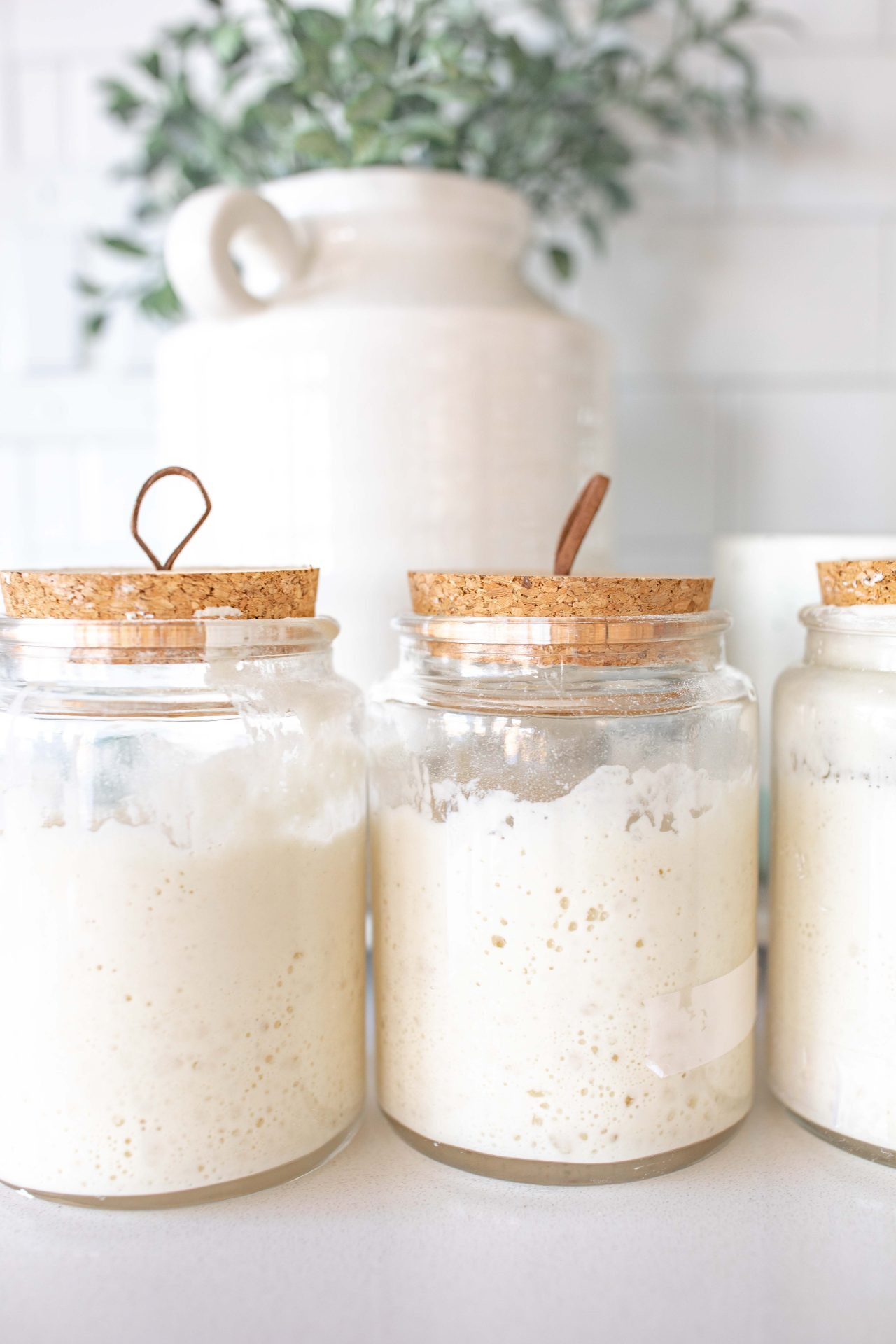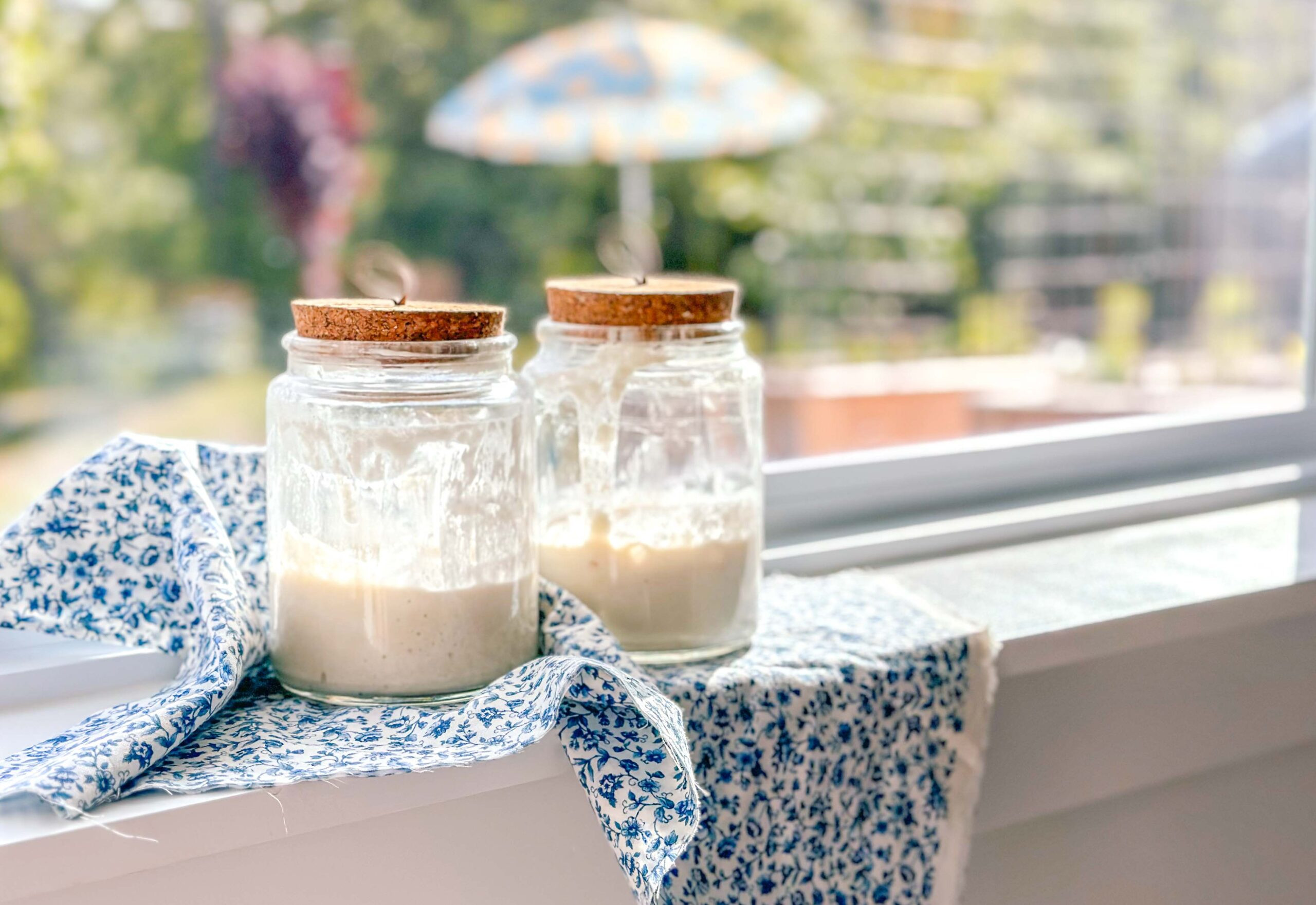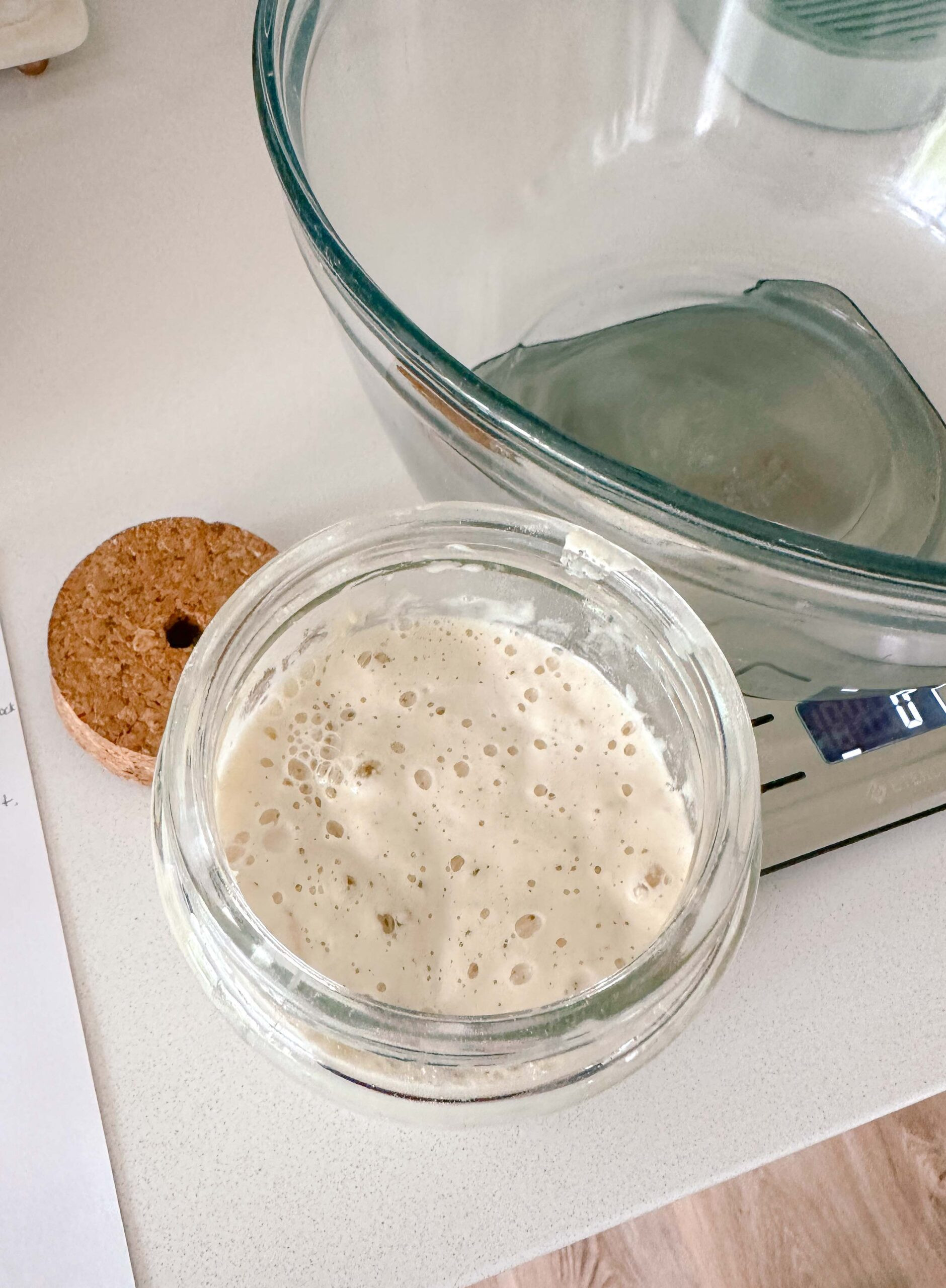Sourdough bread, with its tangy flavor and chewy texture, has surged in popularity. For many home bakers, the journey begins with a crucial ingredient: the sourdough starter. If you’re eager to bake your own sourdough but don’t know where to begin, a common question arises: “Where Can I Buy Sourdough Starter?”
Fortunately, obtaining a sourdough starter is easier than you might think. You have several options, ranging from local sources to convenient online purchases. This guide will walk you through the best places to find a sourdough starter, ensuring you can embark on your sourdough baking adventure with confidence.
Top Spots to Find Your Sourdough Starter
When it comes to acquiring a sourdough starter, you’re not limited to just one avenue. Here are some of the most reliable and accessible places to look:
1. Local Bakeries: Your Neighborhood Sourdough Experts
One of the most direct and often rewarding ways to get a sourdough starter is from a local bakery. Bakeries that specialize in sourdough bread are constantly maintaining active starters. They might be willing to share a portion of their starter with you, sometimes even for free or for a small fee.
Why choose a local bakery?
- Established and Active Starter: Bakeries use their starters daily, ensuring they are robust and ready to bake.
- Local Adaptation: A starter from a local bakery might be already adapted to your regional environment, potentially leading to quicker success.
- Expert Advice: Bakery staff can often provide valuable tips on maintaining and using the specific starter they offer.
How to approach a bakery:
- Call ahead or visit in person: Inquire if they sell or share their sourdough starter.
- Be polite and explain your interest: Let them know you’re an aspiring home baker eager to learn.
- Offer to pay: Even if they offer it for free, a small payment or buying a loaf of their sourdough bread is a nice gesture.
2. Neighbors and Friends: Community Baking at Its Best
The sourdough community is known for its generosity. If you know someone who bakes sourdough bread, don’t hesitate to ask if they would be willing to share a bit of their starter. Many sourdough bakers are happy to pass along their starter to fellow enthusiasts.
Benefits of getting starter from a neighbor or friend:
- Personal Connection: Starting with a starter from someone you know can add a personal touch to your baking journey.
- Ongoing Support: Your neighbor or friend can be a valuable resource for advice and troubleshooting as you begin baking.
- Potentially Free: Often, home bakers are happy to share their starter without charge.
How to ask a neighbor or friend:
- Reach out directly: A simple message or conversation explaining your interest in sourdough and asking about their starter is a great start.
- Explain your baking goals: Sharing your enthusiasm for sourdough can make them more likely to share.
- Offer a baked good in return: Once you’re baking successfully, offering a loaf of sourdough as thanks is a thoughtful gesture.
3. Online Marketplaces: Convenience at Your Fingertips
For those without local bakery access or sourdough-baking friends, online marketplaces offer a convenient solution. Websites like Amazon and Etsy host numerous sellers offering dehydrated sourdough starters.
Purchase a sourdough starter online
Advantages of buying sourdough starter online:
- Wide Selection: Online marketplaces offer various types of starters, including those with specific origins or flour types.
- Convenience: You can purchase a starter from the comfort of your home and have it delivered to your door.
- Dehydrated for Longevity: Online starters are often sold dehydrated, making them shelf-stable and easy to ship.
Things to consider when buying online:
- Seller Reputation: Check seller reviews and ratings to ensure you’re buying from a reputable source.
- Starter Type: Some listings specify the origin or flour type of the starter, which can influence the flavor of your sourdough.
- Activation Instructions: Ensure clear instructions are provided for activating the dehydrated starter.
 sourdough starter, how to feed sourdough, sourdough bread recipe, the best recipe for sourdough bread, sourdough for beginners, sourdough recipes online, free sourdough recipe, how to make sourdough bread, how to make sourdough starter, bread making, baking, bread baking, sourdough terms, what is discard, what is sourdough bread, what is sourdough starter, sourdough life, sourdough recipes, sourdough blogger
sourdough starter, how to feed sourdough, sourdough bread recipe, the best recipe for sourdough bread, sourdough for beginners, sourdough recipes online, free sourdough recipe, how to make sourdough bread, how to make sourdough starter, bread making, baking, bread baking, sourdough terms, what is discard, what is sourdough bread, what is sourdough starter, sourdough life, sourdough recipes, sourdough blogger
4. Specialty Food Stores and Farmers Markets: Hidden Gems for Starters
Don’t overlook specialty food stores or farmers markets in your area. Some of these venues may carry locally made sourdough starters, either fresh or dehydrated. Farmers markets, in particular, can be a great place to find artisanal food producers who might offer sourdough starters.
Why explore specialty stores and farmers markets?
- Unique and Local Starters: You might discover unique, locally sourced starters not available elsewhere.
- Support Local Businesses: Purchasing from these sources supports small businesses and local food economies.
- Direct Interaction with Producers: You may have the chance to speak directly with the person who created the starter and get personalized advice.
How to find starters at these locations:
- Check local farmers market listings: See if any vendors specialize in baked goods or sourdough.
- Inquire at specialty food stores: Ask staff if they carry sourdough starters or know of local sources.
- Look for artisanal bakeries at markets: Small-scale bakeries at farmers markets are often more likely to share or sell starters.
Dehydrated vs. Live Sourdough Starter: What’s the Difference?
When considering buying a sourdough starter, you’ll encounter two main forms: dehydrated and live (or fresh). Understanding the difference is key to choosing the right option for you.
Dehydrated Sourdough Starter:
- Form: Dried flakes or powder of sourdough culture.
- Pros:
- Long Shelf Life: Can be stored at room temperature for extended periods.
- Easy Shipping: Lightweight and stable for shipping, making it ideal for online purchases.
- Lower Risk of Spoilage: Less susceptible to spoilage during transit.
- Cons:
- Requires Activation: Needs to be rehydrated and fed over a few days to become active.
- Initial Wait Time: You’ll need to wait a few days before you can bake with it.
Live (Fresh) Sourdough Starter:
- Form: Active, bubbly mixture of flour and water teeming with wild yeasts and bacteria.
- Pros:
- Ready to Use (Soon): Can often be used to bake sooner than a dehydrated starter, after a feeding or two to ensure activity.
- Visually Appealing: You can see the active fermentation process.
- Cons:
- Shorter Shelf Life: Needs to be fed regularly to stay alive or refrigerated to slow down activity.
- Shipping Challenges: Less suitable for shipping due to its liquid state and need for refrigeration (if shipped active).
- Potential Spoilage: More prone to spoilage if not properly maintained.
Which type should you choose?
- For Beginners: Dehydrated starter is often recommended for beginners due to its ease of shipping and storage. The activation process is a great way to learn about starter development.
- For Immediate Baking (If Available Locally): If you can obtain a live starter locally, and want to bake sooner, it can be a quicker path to sourdough.
Activating Your Dehydrated Sourdough Starter
If you opt for a dehydrated sourdough starter, activating it is a straightforward process that typically takes a few days. Here’s a step-by-step guide based on a common activation method:
Day One:
- Hydrate the Starter: In a clean jar, combine the packet of dehydrated sourdough starter with 3 ounces of lukewarm (around 70°F) filtered water. Stir gently.
- Initial Mixing: For the next 3 hours, mix the starter mixture every 30 to 45 minutes. This helps rehydrate the culture evenly.
- First Feeding: After 3 hours, add 3 ounces of lukewarm filtered water and 3 ounces of all-purpose flour to the jar. Mix well until smooth.
- Rest: Cover the jar loosely and let it sit at room temperature (ideally 70-75°F) for 12-24 hours.
Day Two:
- Observe for Activity: After 12 hours, you should start seeing small bubbles forming in the starter. There might also be a bit of liquid (hooch) on top, which is normal.
- Second Feeding: Add another 3 ounces of lukewarm filtered water and 3 ounces of all-purpose flour to the jar. Stir well.
- Rest Again: Let the starter rest at room temperature for another 8-12 hours.
Day Three:
- Increased Activity: You should now see significantly more bubbles and some rising in the starter.
- Feeding for Baking: Discard 6 ounces of the starter (this is “discard”). Feed the remaining starter with 3 ounces of lukewarm filtered water and 3 ounces of all-purpose flour. Mix well.
- Mark Growth: Place a rubber band or marker on the jar to note the starter’s current level.
- Observe Rise: Let the starter sit at room temperature for 8-10 hours. It should double in size, indicating it’s active and ready to bake with.
 sourdough starter, how to make sourdough starter, how to find sourdough starter, how to activate dried sourdough starter, sourdough cultures dried, where to buy sourdough starter, how can I get sourdough starter, how to make sourdough
sourdough starter, how to make sourdough starter, how to find sourdough starter, how to activate dried sourdough starter, sourdough cultures dried, where to buy sourdough starter, how can I get sourdough starter, how to make sourdough
Day Four and Beyond:
- Baking Time: If your starter has doubled, it’s ready for baking! Follow a sourdough bread recipe.
- If Not Doubled: If your starter hasn’t doubled by day three, continue feeding it once or twice daily (discarding before each feeding) until it consistently doubles within 6-8 hours after feeding. This may take a few more days.
Keeping Your Sourdough Starter Alive and Thriving
Once you have an active sourdough starter, whether purchased or activated, maintaining it is essential for continuous sourdough baking. Here are key tips for keeping your starter healthy:
Regular Feeding:
- Countertop Maintenance (Daily Baking): If you bake frequently (every 1-2 days), keep your starter at room temperature and feed it daily.
- Refrigerator Storage (Less Frequent Baking): For less frequent baking, store your starter in the refrigerator. Feed it every 1-2 weeks, even when not baking.
Feeding Ratio:
- Common Ratio: A common feeding ratio is 1:1:1 – equal parts starter, flour, and water (by weight is most accurate). For example, 3 ounces starter : 3 ounces water : 3 ounces flour.
- Adjust as Needed: You can adjust the ratio based on your starter’s activity and your baking schedule.
Water and Flour Quality:
- Filtered Water: Use filtered water to avoid chlorine and other chemicals that can inhibit starter activity.
- Unbleached Flour: All-purpose or bread flour works well. Organic flour can sometimes boost starter activity.
Storage:
- Clean Jar: Store your starter in a clean jar with a loose-fitting lid to allow for air circulation.
- Refrigerator Storage: When refrigerating, ensure the lid is on securely to prevent drying out, but still allow for some gas release.
Troubleshooting Common Starter Issues:
Even with careful maintenance, you might encounter some common sourdough starter problems. Here’s a quick troubleshooting guide:
-
Starter Isn’t Bubbling or Rising:
- Possible Cause: Too cold, needs more time, inconsistent feedings.
- Solution: Move to a warmer spot (70-75°F), be patient, feed regularly.
-
Starter Smells Like Acetone (Nail Polish Remover):
- Possible Cause: Hungry starter, needs feeding.
- Solution: Feed more frequently.
-
Watery Starter with Hooch (Liquid on Top):
- Possible Cause: Hungry starter.
- Solution: Stir hooch back in and feed.
-
No Bubbles After Several Days (New Starter):
- Possible Cause: Poor flour, chlorinated water, needs more time.
- Solution: Use filtered water, fresh flour, be patient (can take 7-14 days to activate from scratch).
-
Moldy Starter (Pink/Orange Tint):
- Possible Cause: Contamination.
- Solution: Discard and start a new starter with clean tools.
-
Overly Sour Starter:
- Possible Cause: Over-fermented, infrequent feedings.
- Solution: Feed more often to reduce acidity.
-
Dormant Starter After Feeding:
- Possible Cause: Incorrect feeding ratio, too cold water.
- Solution: Check feeding ratio (1:1:1), use lukewarm water.
 sourdough starter, how to make sourdough starter, how to find sourdough starter, how to activate dried sourdough starter, sourdough cultures dried, where to buy sourdough starter, how can I get sourdough starter, how to make sourdough
sourdough starter, how to make sourdough starter, how to find sourdough starter, how to activate dried sourdough starter, sourdough cultures dried, where to buy sourdough starter, how can I get sourdough starter, how to make sourdough
Ready to Bake?
Finding a sourdough starter is the first step in an exciting baking journey. Whether you choose a local bakery, a generous neighbor, an online marketplace, or a specialty store, you’re now equipped with the knowledge to acquire your starter and begin baking delicious sourdough bread at home. Embrace the process, be patient, and enjoy the rewarding experience of sourdough baking!


